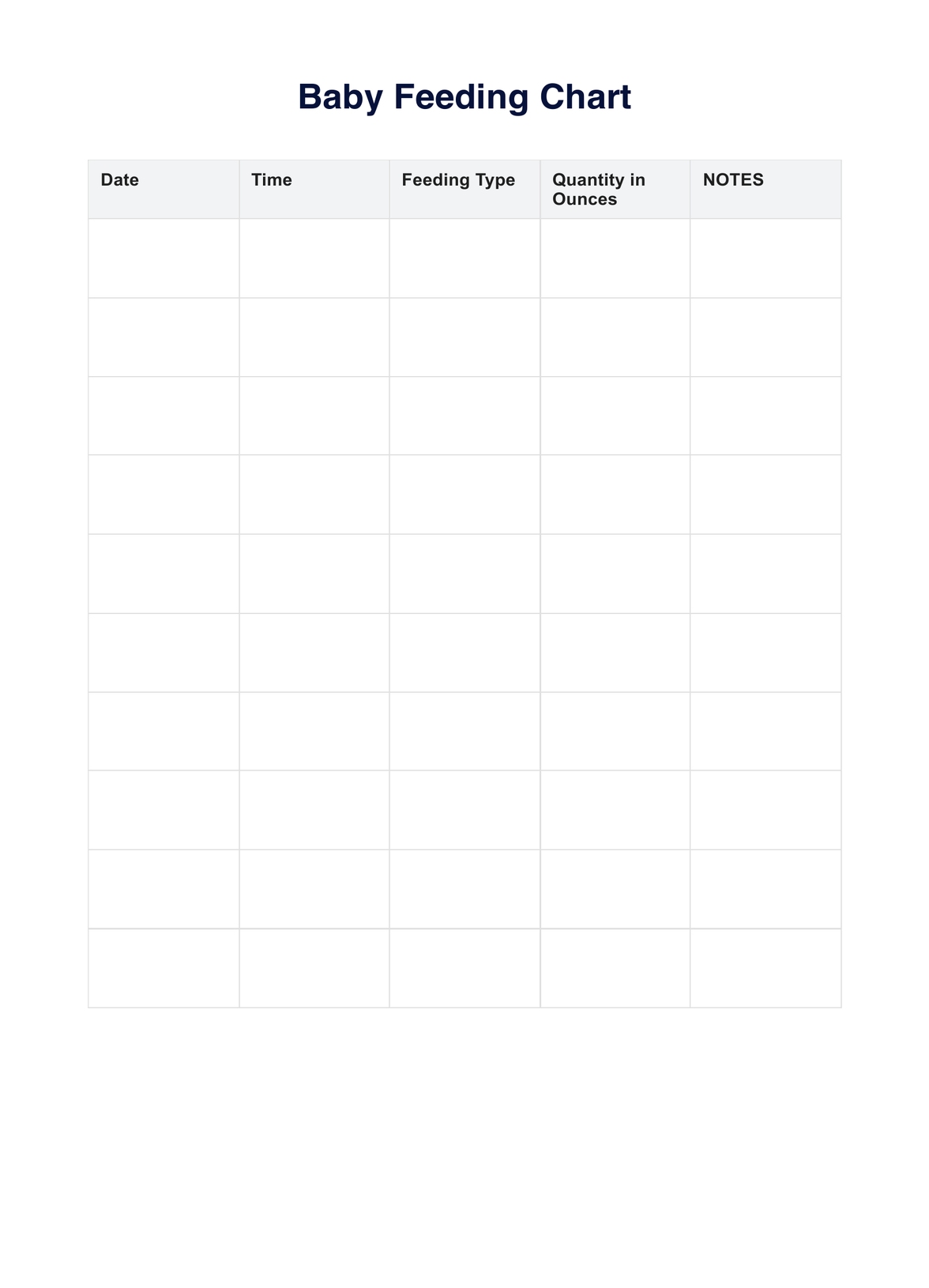No, it's not advisable to drop night feeds for newborns in the first two weeks. Newborns need frequent feeding to support their rapid growth, and night feeds are essential for ensuring they get enough nourishment. Carepatron's baby feeding chart template provides a helpful visual aid for tracking these crucial night feedings, ensuring your little one's needs are met around the clock.

Baby feeding chart
Track your baby's feedings with a helpful chart. Ensure proper nutrition. Download a free PDF example and learn effective usage.
Use Template
Baby feeding chart Template
Commonly asked questions
Newborns typically feed every 2 to 3 hours, including nighttime. It's important to feed on demand and not exceed 4 hours between feeds, as their tiny stomachs need regular nourishment. Utilize Carepatron's baby feeding chart template to record and analyze your newborn's feeding patterns, promoting a healthy and consistent routine.
EHR and practice management software
Get started for free
*No credit card required
Free
$0/usd
Unlimited clients
Telehealth
1GB of storage
Client portal text
Automated billing and online payments











